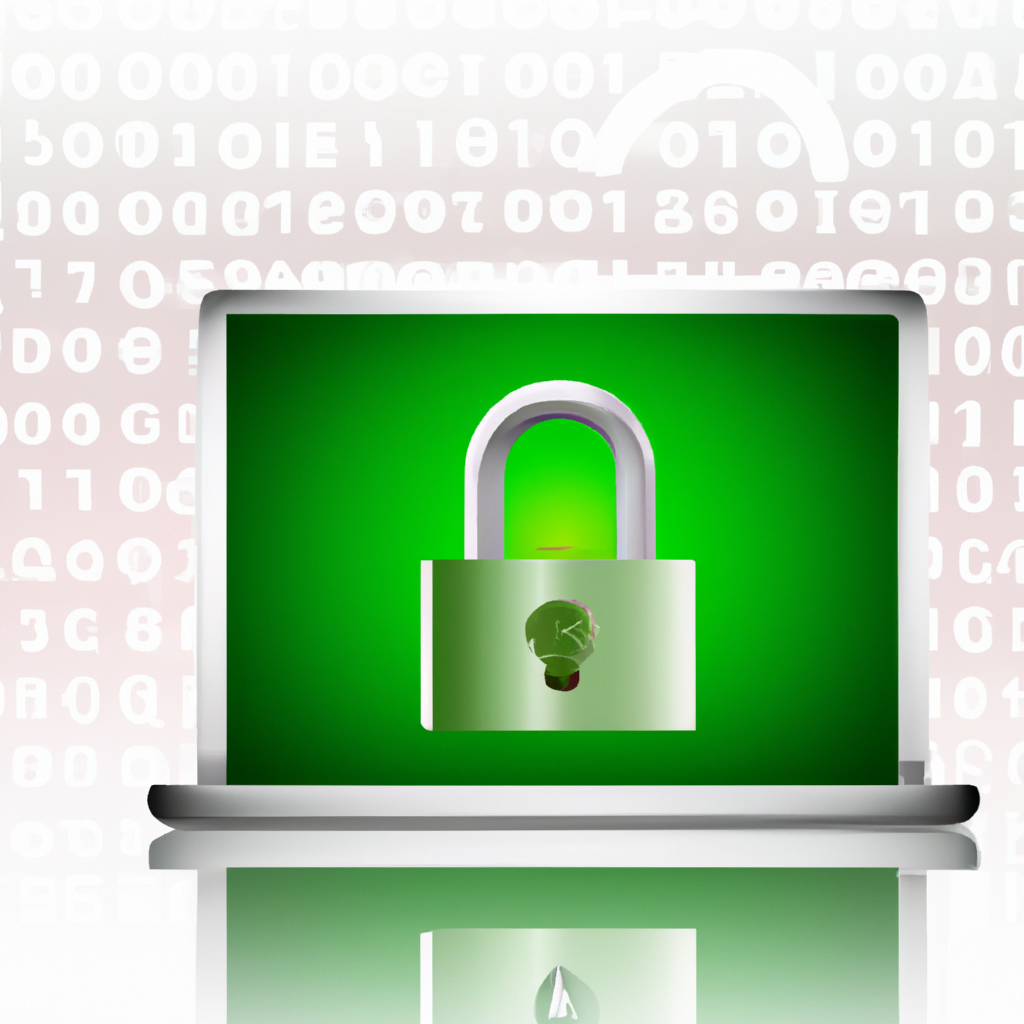The author generated this text in part with ChatGPT. Upon generating draft language, the author reviewed, edited, and revised the language to their own liking and takes ultimate responsibility for the content of this publication.
As a business owner, it’s crucial to understand the importance of cybersecurity. In today’s digital age, companies of all sizes risk falling victim to cyber-attacks. From hacking and data breaches to phishing scams and ransomware attacks, the potential consequences of a cyber attack can be devastating for any business.
This blog post will cover the basics of cybersecurity for business owners. We’ll start by discussing the common types of cyber threats faced by businesses and the potential consequences of a cyber attack on a company. Then we’ll move on to best practices for cybersecurity, including implementing strong passwords and multi-factor authentication, regularly updating software and security systems, training employees on cybersecurity best practices, and more.
We’ll also cover the importance of keeping your data safe by identifying and protecting sensitive data, implementing secure methods for transmitting and storing data, and complying with data protection regulations. And lastly, we’ll discuss how to respond to a cyber attack, including having a plan in place, steps to take immediately following an attack, and how to recover from it.
In summary, this blog post will provide a comprehensive guide to cybersecurity for business owners. By the end of this post, you’ll better understand how to protect your business and its sensitive data from online threats. So, let’s dive in!

Don’t Be Caught Off Guard: Understand the Risks and Realities of Cyberattacks
Understanding the risks associated with cybersecurity is the first step in protecting your business from online threats. As a business owner, you must be aware of the different cyber-attacks your company may face. Some of the most common threats include:
- Hacking occurs when an unauthorized person gains access to a company’s network or computer systems. Hackers can steal sensitive information, disrupt operations, or hold a company’s data hostage.
- Phishing scams are fraudulent emails or messages that appear to be from a legitimate source but are actually from a cyber-criminal. They often ask for personal information or login credentials.
- Ransomware attacks involve cybercriminals encrypting a company’s data and demanding payment in exchange for the decryption key.
The potential consequences of a cyber attack on a business can be severe. A cyber attack can cause financial losses, damage a company’s reputation, cause loss of sensitive information, and even legal repercussions. Businesses may also lose customers and revenue due to a cyber attack. It’s vital to take cybersecurity seriously and take the necessary steps to protect your business from these attacks.

Stay Ahead of the Game: Implement These Essential Cybersecurity Best Practices
Implementing best practices for cybersecurity is essential for protecting your business from online threats. Some key steps that you can take include:
- Implementing strong passwords and multi-factor authentication: Strong, unique passwords and multi-factor authentication (such as a fingerprint or a code sent to your phone) can help to prevent unauthorized access to your business’s networks and systems.
- Regularly updating software and security systems: Software updates often include security patches that help to protect your systems from known vulnerabilities. It’s essential to keep your software and security systems up-to-date to ensure you have the latest protection against cyber threats.
- Training employees on cybersecurity best practices: Your employees are a crucial defense against cyber attacks. By providing them with training on cybersecurity best practices, you can help to ensure that they understand the risks and know how to stay safe online.
- Backing up important data regularly: Regularly backing up critical data can help you recover quickly during a cyber attack.
- Using a firewall and antivirus software: A firewall can help to prevent unauthorized access to your network, while antivirus software can help to detect and remove malware.
By implementing these best practices, you can help to protect your business from cyber threats and minimize the impact of an attack if one does occur.

Don’t Leave Your Business’ Data Vulnerable: Learn How to Keep it Safe
Keeping your data safe is an essential aspect of cybersecurity for business owners. Some key steps that you can take to keep your data secure include:
- Identifying and protecting sensitive data: Identifying the types of data that are most sensitive for your business and taking steps to protect that data is crucial. These steps may include encrypting data, implementing access controls, and regularly monitoring for unusual activity.
- Implementing secure methods for transmitting and storing data: When transmitting data, it’s essential to use secure methods such as Virtual Private Networks (VPNs) or Secure Sockets Layer (SSL) certificates. When storing data, it’s critical to use secure servers or cloud-based storage solutions.
- Complying with data protection regulations: Businesses are subject to various data protection regulations, such as the General Data Protection Regulation (GDPR) or the California Consumer Privacy Act (CCPA), depending on their location. It’s vital to comply with these regulations to avoid legal repercussions.
- Regularly reviewing and updating policies and procedures: Regularly reviewing and updating your data protection policies and procedures can help to ensure that they are up-to-date and effective.
Implementing these steps can help protect your business’s sensitive data and comply with relevant regulations.

Don’t Panic: Learn How to Respond to a Cyber Attack Effectively
No business is immune to cyber attacks, and it’s essential to have a plan in place for responding to an attack. Some key steps to consider include the following:
- Containing the attack: The first step in responding to a cyber attack is to stop it. Stopping the attack may involve disconnecting infected devices from the network, shutting down systems, or implementing other measures to prevent the spread of malware.
- Assessing the damage: After stopping the attack, it’s crucial to evaluate the damage. An evaluation may involve reviewing logs, analyzing network traffic, and identifying any sensitive data that may have been stolen.
- Restoring normal operations: After assessing the damage, it’s vital to restore normal operations as quickly as possible. Restoring functions may involve restoring from backups, patching vulnerabilities, or rebuilding systems.
- Communicating with stakeholders: Speaking with stakeholders about the attack is essential. Informing employees, customers, and other relevant parties about the attack and the resolution plan.
- Reviewing and updating security measures: After a cyber-attack, reviewing and updating your security measures is essential. Identify what went wrong and take steps to prevent similar attacks in the future.
Having a plan in place and taking these steps can help minimize the impact of a cyber attack on your business.

Stay Protected: Learn How to Secure Your Business from Cyber Threats
Cybersecurity is an essential concern for business owners. By understanding the risks, implementing best practices, keeping your data safe, and having the plan to respond to an attack, you can help protect your business from online threats.
It is important to note that cyber threats constantly evolve, and staying informed and up-to-date with the latest cybersecurity trends and best practices is essential. It’s also important to remember that cybersecurity is not a one-time task but an ongoing process that requires regular review and updating.
Following the tips outlined in this blog post can help ensure that your business is well-protected against cyber-attacks proactively.

Don’t Go it Alone: Learn about the Resources Available to Help Protect Your Business
As a business owner, it’s essential to have access to the resources you need to stay informed and keep your business secure. Here are a few additional resources that can help:
- Government resources: Many governments have cybersecurity resources available for businesses. For example, the US government’s National Institute of Standards and Technology (NIST) has a Small Business Cybersecurity Corner with helpful information and resources.
- Cybersecurity associations: Many cybersecurity associations offer business resources and support, such as the International Association of Security Awareness Professionals (IASAP) and Cybersecurity Ventures.
- Cybersecurity software and services: There are many cybersecurity software and services available for businesses, such as antivirus programs, firewalls, and intrusion detection systems. These can help to protect your business from cyber threats.
- Cybersecurity training and education: Many organizations offer cybersecurity training and education programs to help you and your employees stay updated on the latest threats and best practices.
Cybersecurity is a complex topic; if your business needs help with your Cybersecurity strategy, contact Gizmo Solutions today for a free initial consultation!
Frequently Asked Questions
Q: What is cybersecurity, and why is it essential for business owners?
A: Cybersecurity refers to the practice of protecting computers, servers, mobile devices, electronic systems, networks, and data from digital attacks, breaches, and other cyber threats. Business owners need to prioritize cybersecurity because it can protect sensitive business and customer information, prevent financial losses and maintain the integrity of business operations.
Q: What are some common cyber threats that businesses may face?
A: Common cyber threats that businesses may face include phishing scams, malware, ransomware, denial of service attacks, and data breaches.
Q: What are some best practices for protecting a business from cyber threats?
A: Some best practices for protecting a business from cyber threats include regularly updating software and security systems, implementing a strong password policy, training employees on cybersecurity best practices, regularly backing up important data, and implementing a disaster recovery plan.
Q: How can a business respond to a cyber attack?
A: A business should immediately disconnect affected systems from the network during a cyber attack and contact a cybersecurity expert for assistance. The company should also document and report the incident to the proper authorities and take steps to prevent similar attacks in the future.
Q: What resources are available for business owners to learn about cybersecurity?
A: Business owners can find additional resources on cybersecurity through government agencies such as the Federal Bureau of Investigation (FBI) and the Department of Homeland Security (DHS), as well as cybersecurity organizations such as the National Cyber-Forensics & Training Alliance (NCFTA) and the International Association of Computer Science and Information Technology (IACSIT).
Q: Is it enough to have antivirus software installed to protect my business?
A: Antivirus software is essential to protecting a business from cyber threats, but it should be just one part of a comprehensive cybersecurity strategy. Other measures, such as employee education, regular security updates, and disaster recovery plans, are crucial for preventing and responding to cyber-attacks.
About Scott Gill
Scott Gill is a blogger, tech nerd, and cybersecurity expert who’s been keeping businesses safe from online threats for ten years. He’s the go-to guy for all your technology or cybersecurity concerns and will have you laughing while you learn.